Pablo Picasso
 From Conservapedia
From Conservapedia 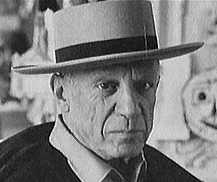
Pablo Ruiz Picasso (Malaga, 1881 - Mougins, 1973) was a Spanish artist who was both a painter and sculptor. Pablo Picasso co-founded (along with Basque artist George Braque) Cubism, which embodied the neuroses (some would say schizophrenia) of artist of his era. He produced a monumental 20,000 artworks during his 70-year career. Picasso’s torrential outpouring of work was so extensive and complex that art historians have divided it into individual periods.[1] He was the single most dominating figure in modern art.
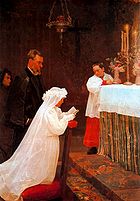
A prodigy in his youth and the son of an art teacher, Picasso was only 12 when he began exhibiting his first paintings in his famous primitive style in Barcelona. Picasso enrolled in advanced classes at Barcelona’s Royal Academy of Art at age 15. The strong geometric forms of his groundbreaking Cubist works redefined art as a medium that could digress from literal images of reality. Passionately creative in every genre from primitive art to sketches to Surrealism, Picasso profoundly impacted 20th century art. Perhaps his most famous painting was Guernica, which was inspired by his outrage at the destruction of a Socialist stronghold during the Spanish Civil War. Picasso, a lifelong Communist, supported the Republican government defeated by General Franco's forces and never returned to his homeland after Franco's victory.[2]
He is immortalized in several of the works of the Lost Generation of American ex-patriate writers with whom he associated in Paris during the 1920s, including Gertrude Stein and Ernest Hemingway, by whom he is fondly remembered in their respective autobiographical efforts of that time (The Autobiography of Alice B. Toklas and A Moveable Feast).
He was also a misogynist, treating several lovers horribly, and he also cruelly left one of his lovers for the World Peace Conference just as she was going into labor.
With his Charnel House of 1945, Picasso concluded the series of pictures that he had started with Guernica. The connection between the paintings becomes immediately obvious when we consider the rigidly limited color scheme and the triangular composition of the center.[3]
In spite of his left-wing views, Picasso died a very wealthy man and left a fortune estimated to be $50 million.

L'Absinthe

"Les Demoiselles d'Avignon"

Jacqueline with Crossed Hands

Still-Life

Nu au Plateau de Sculpteur (Nude, Green Leaves and Bust)

Guitar and Violin

Garçon à la pipe

Dora Maar Au Chat
Garçon à la pipe and Dora Maar Au Chat are two of the world's most expensive paintings.
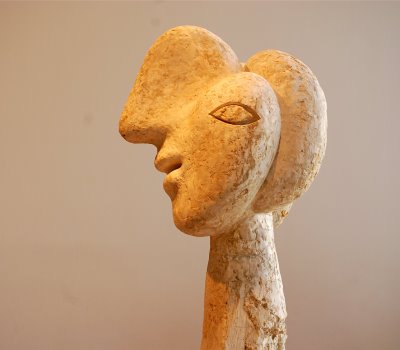
Head of a Woman, sculpture at MOMA.
Contents
- 1 Quotes
- 2 See also
- 3 External links
- 4 References
Quotes[edit]
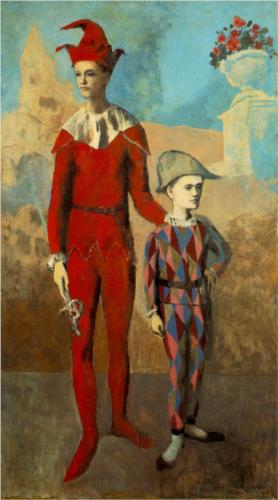
- "I am always doing that which I cannot do, in order that I may learn how to do it." [4]
- "We all know art is not truth. Art is a lie that makes us realize truth."
- "I do not seek. I find."
| “ |
“Cubism is no different from any other school of painting. The same principles and the same elements are common to all. The fact that for a long time cubism has not been understood and that even today there are people who cannot see anything in it, means nothing. I do not read English, and an English book is a blank to me. This does not mean that the English language does not exist, and why should I blame anyone but myself if I cannot understand what I know nothing about?” P. Picasso. |
” |
- Art washes away from the soul the dust of everyday life.
- The artist is a receptacle for emotions that come from all over the place: from the sky, from the earth, from a scrap of paper, from a passing shape, from a spider's web.
See also[edit]
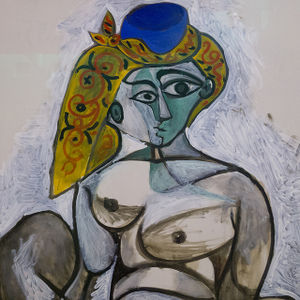
- Painting Masterpieces
- Painting Schools
- Contemporary painting
- Painting around the world
- Famous Spanish Artists
- Gallery Francisco de Goya
- Contemporary Abstract Painting
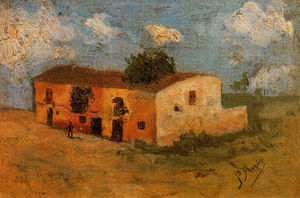

External links[edit]
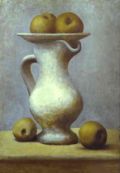
- Pablo Picasso, Britannica Online Encyclopedia
- Pablo Picasso, Art Encyclopedia
- Picasso painting sells for record $106.5 million
- Fundación Picasso Málaga. In Spanish
References[edit]
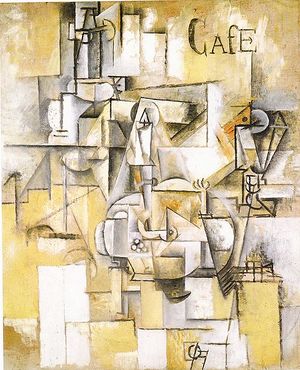
- ↑ Petite Fleurs. Pablo Picasso, AllPosters.com
- ↑ 1973: Art master Picasso dies, April 8
- ↑ Picasso Biography, Britannica: Pablo Picasso: Life and career.
- ↑ Choose peace & happiness P.157 By Susyn Reeve
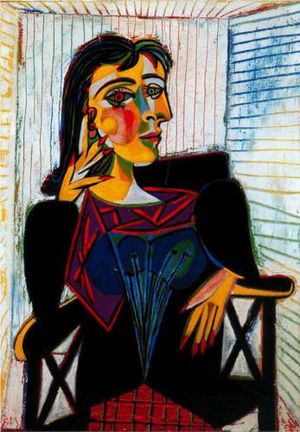
Categories: [Spanish Painters] [Communists]
↧ Download as ZWI file | Last modified: 02/23/2023 17:58:28 | 27 views
☰ Source: https://www.conservapedia.com/Pablo_Picasso | License: CC BY-SA 3.0
 ZWI signed:
ZWI signed: KSF
KSF